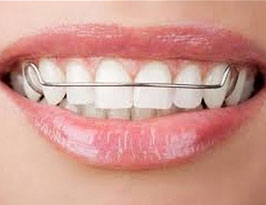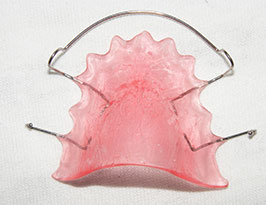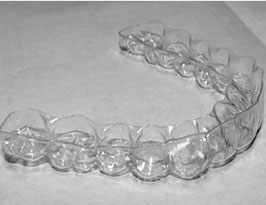Retainers
You've worked hard for your beautiful smile; keep it that way!

Finally, your braces have been removed and your smile is beautiful, straight, and best of all, metal-free! However, your orthodontic journey isn't quite completed. To keep your smile looking its best, you'll have to wear a retainer to preserve and stabilize your results. Retainers are needed to control or limit potential changes in tooth position. They are used after braces or aligner treatment to hold teeth in their correct alignment while the surrounding gums, bone, and muscle adjust to the new positioning of your teeth.
Retention is a Lifetime Commitment
This is very important! Teeth naturally move throughout life through use, wear and due to muscular and skeletal maturation (whether or not an individual has had orthodontic treatment). There are elastic fibers in your mouth that act like rubberbands; therefore, patients need to wear retainers every night (unless its a permanent bonded lingual retainer) to ensure that the teeth stay in the position that the orthodontist have placed them. When the retention phase commences, the orthodontist's work is essentially done. It is now up to you, the patient, to make sure your teeth stay in the correct position to maintain that final result by wearing your retainer(s) as instructed. If your retainer is lost or damaged, it is important to contact your orthodontist right away for a repair or replacement; otherwise your teeth will shift.
Types of Retainers
Retainers are custom-made and can be removable or fixed.


- Hawley retainer - a traditional removable retainers typically include a metal wire that surrounds the front teeth and is attached to an acrylic arch that sits in the roof of the mouth. The metal wires can be adjusted to finish treatment and continue minor movement of the front teeth as needed.
- Essix retainer - Aligner-style retainers (clear plastic custom molded to your teeth) look similar to clear aligners and offer a more aesthetic alternative to wire retainers. This clear retainer may fit over the entire arch of your teeth, or only from canine to canine (clip-on retainer). It is produced from a mold of your newly aligned teeth.
- Bonded lingual - Fixed retainers consist of wires bonded behind the bottom and/or top teeth. While the device is usually required no more than a year after wisdom teeth have been extracted, it is often kept in place for life.
Pros and Cons
- Removable retainers can be taken out for eating and oral hygiene routines.
- Removable retainers can get lost easily, so remember to keep yours in the case whenever you remove it to eat or brush.
- A fixed retainer is great if you don't want to keep track of it, or if you don't want to worry about how many hours per day it must be worn.
- Teeth with fixed retainers require a little extra attention to remove tartar while flossing. Patients with fixed retainers often must use floss threaders to pass dental floss through the small spaces between the retainer and the teeth.